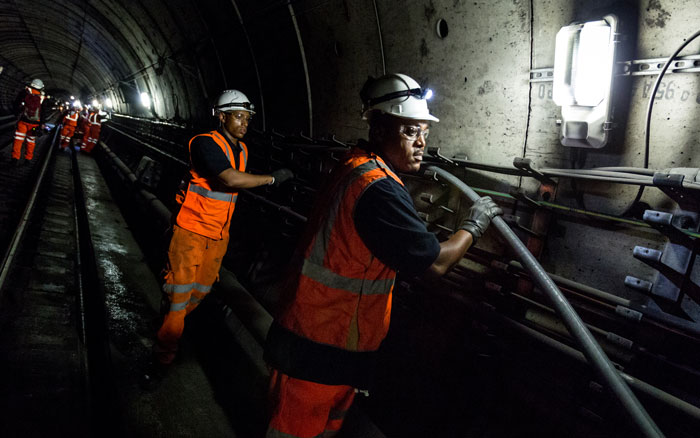The company rolling out mobile phone coverage on the London Underground has signed its first two commercial contracts, with Three and EE.
Although Wi-Fi coverage is available in the stations for all networks except Vodafone, and mobile coverage is available on all networks along the length of the Jubilee line extension, that was a pilot installation carried out by London Underground to test the service.
Earlier this year, a 20-year commercial contract was signed with BAI Communications to extend that to the rest of the London Underground, and they need to sign new contracts with the mobile networks to provide phone services in the extended network.
Installation work at some of London’s busiest stations, including Oxford Circus, Tottenham Court Road, Bank, Euston and Camden Town is currently underway for launch later in 2022.
They’ve now signed up Three and EE as their first customers.
That leaves Vodafone and O2 to sign up, and in a related statement this morning, Vodafone said that “negotiations have progressed well, and we expect to sign up with BAI next month”
The implications for the virtual operators (MVNOs) that piggyback on the four big networks will for them to decide separately.
Billy D’Arcy, CEO of BAI Communications UK also confirmed that “Discussions with O2 and Vodafone are ongoing, with any decisions relating to the pilot scheme to be made closer to March 2022, as part of the operational transfer to BAI.”
Shashi Verma, Chief Technology Officer at TfL, said: “It is great that these first two mobile operators have now signed up to provide high-speed, uninterrupted 4G coverage across the London Underground network. Providing mobile connectivity to customers within the tunnels and on platforms across London will help them stay connected more easily and will both provide a long-term revenue stream for TfL and support economic growth across the city.”
The delivery of mobile phone coverage on the London Underground was signed via a concession agreement so that the cost of installing it will be funded by BAI at no cost to TfL, while TfL will also earn revenue from the contract over its 20-year lifespan.
Work is also underway to ensure that the Elizabeth line can have mobile connectivity as soon as possible once it has opened. From launch, Wi-Fi access will be possible in the Elizabeth line stations, and will be extended into tunnels later in 2022.
The network will also host the Home Office’s Emergency Services Network (ESN), which will replace the existing Airwave system currently used by London’s emergency response teams.
BAI anticipates investing more than £1bn across the Connected London programme, which will see a backbone of mobile and digital connectivity established across London. A full-fibre network will also be delivered that will connect to buildings and street assets, like traffic lights and lampposts that house small 5G mobile transmitter cells.
Updated 8:19am: Included a statement from Vodafone.
Updated 10:53am: Included a statement from BAI Communications.








>> …will both provide a long-term revenue stream for TfL…
Does that mean that the end-user will have to pay an additional charge ?
Will it be an add-on that is chargeable ?
If not, what is the basis of the “long-term revenue stream for TfL” ?
All companies that rent space to the mobile networks earn an income from that – whether it’s buildings, farms… or tube tunnels.
>The implications for the virtual operators (MVNOs) that piggyback on the four big networks will for them to decide separately.
Are you missing a ‘be’?
We don’t have any coverage once out of built up areas not even for emergencies!
The mobile networks cover 99% of the population of the UK, and while obviously there will be not-spots for individual networks, if you’re making an emergency call the phone will connect to any network regardless of who your provider is.
But as usual, upgrades in location X provoke complaints that upgrades aren’t happening in location Y as if somehow companies investing in one place shouldn’t be doing so.
For those of us bored with strangers yelling I’m On The Train or other stuff of no interest or relevance to us this is the last thing we need to invade our privacy and spread viruses 😫